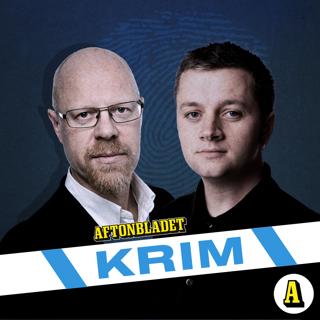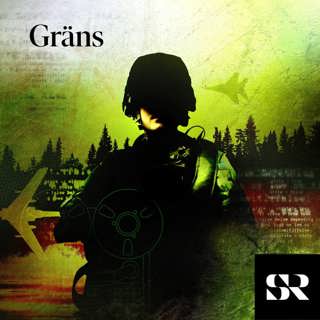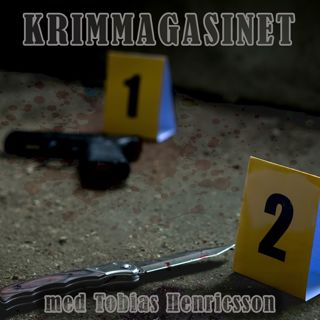
The Idaho Murders: The First 72 Hours Of Kohberger’s Chaos
In this episode of Hidden Killers with Tony Brueski, we pull back the curtain on the most misleading—and most dangerous—phase of any major crime story: the first 72 hours. Using the Bryan Kohberger case as a case study, Tony dissects how the earliest reporting on the University of Idaho murders quickly spiraled into misinformation, emotional panic, and public certainty based on little more than vague police statements and internet rumor. From “no threat to the community” to “unconscious person” to the infamous white Hyundai ask—almost everything the public believed in the first three days either changed or was clarified later. But by then, the narrative had hardened. In this longform breakdown, we expose how the fog of breaking news forms, why the media often isn’t lying (even when the facts change), and how psychologically we cling to early stories even in the face of hard evidence. We explore the myths that formed—victims tied and gagged, the skinned dog rumor, the DoorDash driver, stalker theories—and show exactly what was reported when and why the facts didn’t stick. This is not a hit piece on the press. It’s a sharp, fact-driven guide to how public perception gets hijacked during active investigations, and why it matters—especially in a case as emotionally loaded and legally complex as the Kohberger trial. If you followed this case from the beginning, you need to hear this. Because chances are, some of what you still believe was never true to begin with. 🎧 Listen now for a reality check that’s long overdue—and a reminder that sometimes, certainty is the most dangerous lie of all. #Kohberger #IdahoMurders #TrueCrime #HiddenKillers #MediaMisinformation #BryanKohberger #BreakingNews #PsychologyOfCrime #CriminalJustice #TrueCrimePodcast Want to comment and watch this podcast as a video? Check out our YouTube Channel. https://www.youtube.com/@hiddenkillerspod Instagram https://www.instagram.com/hiddenkillerspod/ Facebook https://www.facebook.com/hiddenkillerspod/ Tik-Tok https://www.tiktok.com/@hiddenkillerspod X Twitter https://x.com/tonybpod Listen Ad-Free On Apple Podcasts Here: https://podcasts.apple.com/us/podcast/true-crime-today-premium-plus-ad-free-advance-episode/id1705422872
9 Okt 16min

Forgetting Bryan Kohberger: A Mother’s Powerful Choice
In the face of unthinkable tragedy, Stacy Chapin, the mother of slain University of Idaho student Ethan Chapin, chose a path of grace over vengeance. This deeply moving commentary from Hidden Killers explores her powerful decision to not let Bryan Kohberger—the accused killer—define her or her family's story. Instead of focusing on the crime, Stacy and her family have channeled their grief into a powerful legacy, establishing scholarships and writing a book to honor Ethan's life. This episode is a tribute to the strength of the human spirit. It's about what happens after the crime—the difficult journey of healing, the importance of reclaiming a victim’s memory, and the radical act of choosing peace in a world that demands outrage. We'll examine this unique approach to grieving and the profound impact it can have on survivors. This is a story of resilience, love, and the enduring power of a family's legacy. Hashtags: #EthanChapin #StacyChapin #IdahoMurders #TrueCrime #BryanKohberger #GriefAndHealing #HiddenKillers #JusticeForEthan #LegacyOfLove #TrueCrimeStories #SurvivorsVoice #InspirationalStories #CrimeCommentary #JusticeSystem Want to comment and watch this podcast as a video? Check out our YouTube Channel. https://www.youtube.com/@hiddenkillerspod Instagram https://www.instagram.com/hiddenkillerspod/ Facebook https://www.facebook.com/hiddenkillerspod/ Tik-Tok https://www.tiktok.com/@hiddenkillerspod X Twitter https://x.com/tonybpod Listen Ad-Free On Apple Podcasts Here: https://podcasts.apple.com/us/podcast/true-crime-today-premium-plus-ad-free-advance-episode/id1705422872
8 Okt 13min

Buried in a Box: Bryan Kohberger’s Miserable Life Behind Bars
What does life look like for Bryan Kohberger now that he’s off the front page and locked inside one of Idaho’s most restrictive prisons? In this episode of Hidden Killers with Tony Brueski, we go inside the Idaho Maximum Security Institution—home to death row, long-term restrictive housing, and now, Bryan Kohberger. This is not general population. This is J Block. And the reality of Kohberger’s existence there is bleak. We break down every confirmed detail of his day-to-day life: • 23 hours a day in a single cell • One hour of solo outdoor rec • Showers every other day • Movement only in full restraints • Commissary as his only “task” of the week • Surveillance on all calls, messages, and mail • Visitation through glass, if allowed at all Using official records from the Idaho Department of Correction and verified reporting, this is a deeply researched, fact-driven look at the institutional monotony, isolation, and psychological erosion that defines Kohberger’s life today. This isn’t a story of redemption, revenge, or rehabilitation. It’s the slow, bureaucratic erasure of a man from public view—no longer a suspect, no longer a student, no longer in control. Tony Brueski guides you through this haunting portrait with the signature Hidden Killers voice: sharp, emotionally grounded, and relentlessly focused on truth over spectacle. Subscribe now for more deep dives into America’s most disturbing criminal cases and what justice looks like after the trial ends. #BryanKohberger #IdahoMurders #TrueCrime #HiddenKillers #JBlock #PrisonLife #LifeWithoutParole #Criminology #JusticeSystem #TonyBrueski Want to comment and watch this podcast as a video? Check out our YouTube Channel. https://www.youtube.com/@hiddenkillerspod Instagram https://www.instagram.com/hiddenkillerspod/ Facebook https://www.facebook.com/hiddenkillerspod/ Tik-Tok https://www.tiktok.com/@hiddenkillerspod X Twitter https://x.com/tonybpod Listen Ad-Free On Apple Podcasts Here: https://podcasts.apple.com/us/podcast/true-crime-today-premium-plus-ad-free-advance-episode/id1705422872
7 Okt 15min

"Too Disturbing to See”: Judge Blocks Graphic Kohberger Crime Scene Photos-WEEK IN REVIEW
"Too Disturbing to See”: Judge Blocks Graphic Kohberger Crime Scene Photos-WEEK IN REVIEW Should the worst moments of someone’s life be public forever? In this gripping episode of Hidden Killers with Tony Brueski, we unpack a powerful new court ruling in the Bryan Kohberger case—one that challenges how far the public’s right to know really goes. Idaho Judge Megan Marshall has officially barred the release of graphic crime scene photos depicting the slain bodies of four University of Idaho students: Kaylee Goncalves, Madison Mogen, Xana Kernodle, and Ethan Chapin. Why does this matter? Because we’re living in an age where “transparency” often doubles as clickbait. The photos in question, described by the judge as “incredibly disturbing,” were requested under Idaho’s Public Records Act. But citing emotional trauma to the families and legal precedent around survivor privacy, the court drew a clear line: some truths don’t need to be seen to be known. We break down the legal framework behind the ruling, including the landmark National Archives v. Favish decision and the Ninth Circuit’s recognition of post-mortem privacy. We also explore the tension between legitimate public interest and pure morbid curiosity—especially in the digital age where true crime content gets instantly repurposed, decontextualized, and weaponized online. What gets lost when we treat victim imagery as “just another post”? And what do we actually gain when the system chooses dignity over spectacle? This is not just a legal story—it’s a cultural reckoning. One that asks: Is it justice if the families suffer more after the verdict is in? Watch now as we separate justice from voyeurism—and explain why this ruling may reshape the future of transparency in high-profile true crime cases. Hashtags #BryanKohberger #IdahoMurders #TrueCrimeNews #HiddenKillers #CrimeScenePrivacy #UniversityOfIdaho #KayleeGoncalves #XanaKernodle #EthanChapin #MadisonMogen Want to comment and watch this podcast as a video? Check out our YouTube Channel. https://www.youtube.com/@hiddenkillerspod Instagram https://www.instagram.com/hiddenkillerspod/ Facebook https://www.facebook.com/hiddenkillerspod/ Tik-Tok https://www.tiktok.com/@hiddenkillerspod X Twitter https://x.com/tonybpod Listen Ad-Free On Apple Podcasts Here: https://podcasts.apple.com/us/podcast/true-crime-today-premium-plus-ad-free-advance-episode/id1705422872
5 Okt 13min

"Too Disturbing to See”: Judge Blocks Graphic Kohberger Crime Scene Photos
"Too Disturbing to See”: Judge Blocks Graphic Kohberger Crime Scene Photos Should the worst moments of someone’s life be public forever? In this gripping episode of Hidden Killers with Tony Brueski, we unpack a powerful new court ruling in the Bryan Kohberger case—one that challenges how far the public’s right to know really goes. Idaho Judge Megan Marshall has officially barred the release of graphic crime scene photos depicting the slain bodies of four University of Idaho students: Kaylee Goncalves, Madison Mogen, Xana Kernodle, and Ethan Chapin. Why does this matter? Because we’re living in an age where “transparency” often doubles as clickbait. The photos in question, described by the judge as “incredibly disturbing,” were requested under Idaho’s Public Records Act. But citing emotional trauma to the families and legal precedent around survivor privacy, the court drew a clear line: some truths don’t need to be seen to be known. We break down the legal framework behind the ruling, including the landmark National Archives v. Favish decision and the Ninth Circuit’s recognition of post-mortem privacy. We also explore the tension between legitimate public interest and pure morbid curiosity—especially in the digital age where true crime content gets instantly repurposed, decontextualized, and weaponized online. What gets lost when we treat victim imagery as “just another post”? And what do we actually gain when the system chooses dignity over spectacle? This is not just a legal story—it’s a cultural reckoning. One that asks: Is it justice if the families suffer more after the verdict is in? Watch now as we separate justice from voyeurism—and explain why this ruling may reshape the future of transparency in high-profile true crime cases. Hashtags #BryanKohberger #IdahoMurders #TrueCrimeNews #HiddenKillers #CrimeScenePrivacy #UniversityOfIdaho #KayleeGoncalves #XanaKernodle #EthanChapin #MadisonMogen Want to comment and watch this podcast as a video? Check out our YouTube Channel. https://www.youtube.com/@hiddenkillerspod Instagram https://www.instagram.com/hiddenkillerspod/ Facebook https://www.facebook.com/hiddenkillerspod/ Tik-Tok https://www.tiktok.com/@hiddenkillerspod X Twitter https://x.com/tonybpod Listen Ad-Free On Apple Podcasts Here: https://podcasts.apple.com/us/podcast/true-crime-today-premium-plus-ad-free-advance-episode/id1705422872
3 Okt 13min

Inside Bryan Kohberger’s Murder-Morning Shopping Trip & What the Survivors Endured
Inside Bryan Kohberger’s Murder-Morning Shopping Trip & What the Survivors Endured Two threads. One killer. And a behavioral trail that doesn’t lie. In this combined breakdown, I’m joined by Robin Dreeke to walk through two critical pieces of the Kohberger case: The post-murder shopping footage, where Kohberger casually walks the aisles at Costco and the grocery store—mere hours after the murders. The survivor interviews, where Dylan Mortensen and Bethany Funke describe confusion, fear, and sensory chaos inside the house that night. This isn’t about internet drama. It’s about how behavior—on both ends—tells the story. We look at how Kohberger re-entered public space like nothing had happened. Robin explains what the FBI looks for in footage like this: timing, movement, risk exposure, behavioral regulation. Then we shift to the interviews—two young women surviving something unspeakable. We walk through what they said, why they said it the way they did, and why the people attacking them online are dead wrong. This segment is about evidence, not ego. About listening, not twisting. About understanding what trauma sounds like—and what performance looks like. Bryan Kohberger is guilty. He’s in prison. But the story doesn’t end at conviction. These details matter. Because they show us the full anatomy of this case—from the killer’s fake calm to the survivors’ real fear. 🔖 HASHTAGS #HiddenKillers #BryanKohberger #RobinDreeke #CostcoVideo #DylanMortensen #BethanyFunke #PostCrimeBehavior #TraumaInformed #Idaho4 #TrueCrimeBreakdown Want to comment and watch this podcast as a video? Check out our YouTube Channel. https://www.youtube.com/@hiddenkillerspod Instagram https://www.instagram.com/hiddenkillerspod/ Facebook https://www.facebook.com/hiddenkillerspod/ Tik-Tok https://www.tiktok.com/@hiddenkillerspod X Twitter https://x.com/tonybpod Listen Ad-Free On Apple Podcasts Here: https://podcasts.apple.com/us/podcast/true-crime-today-premium-plus-ad-free-advance-episode/id1705422872
1 Okt 55min

Stop Blaming the Kohberger Survivors: Inside The Victim Interviews
Stop Blaming the Kohberger Survivors: Inside The Victim Interviews There’s a special kind of sickness in the way people have twisted the trauma of Dylan Mortensen and Bethany Funke into online conspiracy bait. Two young women lived through the unimaginable—and the internet turned them into suspects in their own survival. In this segment, I sit down with Robin Dreeke, retired FBI Special Agent, to walk through the actual police interviews of the surviving roommates in the Kohberger case. Not to dissect their words—but to understand them. Dylan heard noises. A dog barking. Someone say “someone’s here.” Bethany noticed light. Movement. A shift in the air. And none of it made sense until it was too late. That’s trauma. That’s shock. That’s the brain locking up to keep you alive. Robin helps us unpack how trained investigators read this kind of narrative: – Why fragmented memory doesn’t equal fabrication – How time distortion, confusion, and delay are common under threat – And why influencers trying to score clout off survivor pain are the real rot in the system We walk through the timeline without judgment. We connect their words to forensic markers. And we push back hard on the cruel, idiotic noise that keeps trying to turn their trauma into “evidence.” Bryan Kohberger is guilty. He’s in prison. These women lived through hell. Let’s treat them like it. 🔖 HASHTAGS #HiddenKillers #BryanKohberger #DylanMortensen #BethanyFunke #RobinDreeke #TraumaInformed #RoommateInterview #VictimShaming #Idaho4 #TrueCrimeCommunity Want to comment and watch this podcast as a video? Check out our YouTube Channel. https://www.youtube.com/@hiddenkillerspod Instagram https://www.instagram.com/hiddenkillerspod/ Facebook https://www.facebook.com/hiddenkillerspod/ Tik-Tok https://www.tiktok.com/@hiddenkillerspod X Twitter https://x.com/tonybpod Listen Ad-Free On Apple Podcasts Here: https://podcasts.apple.com/us/podcast/true-crime-today-premium-plus-ad-free-advance-episode/id1705422872
29 Sep 28min

Costco, Coffee, and Cold Blood: Kohberger’s Post-Crime Behavior Decoded By FBI
Costco, Coffee, and Cold Blood: Kohberger’s Post-Crime Behavior Decoded By FBI Let’s talk about what Bryan Kohberger did just hours after slaughtering four students in their sleep: He went shopping. Calm. Casual. Coffee aisle. Grocery store. Like it was any other day. In this segment, I’m joined by retired FBI Special Agent Robin Dreeke to break down the now-infamous Costco/grocery store footage showing Kohberger moving through aisles post-massacre. We’re not here for shock—we’re here for behavior. Because what he does in that video isn’t about caffeine. It’s about control. It's about how a killer works to look normal while dragging the weight of four bodies behind him. Robin takes us through how investigators read this kind of post-crime public behavior: – Was he trying to cool off… or cover up? – What does risk tolerance look like under cameras? – Why does “acting normal” matter when it’s anything but? – And what does this reveal about how Kohberger planned—or didn’t? We also unpack how seemingly meaningless choices—like self-checkout, cart behavior, aisle time, or eye contact—can become behavioral data points when layered with phone records, receipts, and surveillance clocks. Bryan Kohberger pleaded guilty. He’s in prison for life. But what he did in that store—how he carried himself—still tells us who he really is. 🔖 HASHTAGS #BryanKohberger #HiddenKillers #RobinDreeke #KohbergerVideo #CostcoSurveillance #TrueCrime #PostCrimeBehavior #CriminalProfiling #CoffeeRun #BehaviorLeavesATrail Want to comment and watch this podcast as a video? Check out our YouTube Channel. https://www.youtube.com/@hiddenkillerspod Instagram https://www.instagram.com/hiddenkillerspod/ Facebook https://www.facebook.com/hiddenkillerspod/ Tik-Tok https://www.tiktok.com/@hiddenkillerspod X Twitter https://x.com/tonybpod Listen Ad-Free On Apple Podcasts Here: https://podcasts.apple.com/us/podcast/true-crime-today-premium-plus-ad-free-advance-episode/id1705422872
29 Sep 27min






















